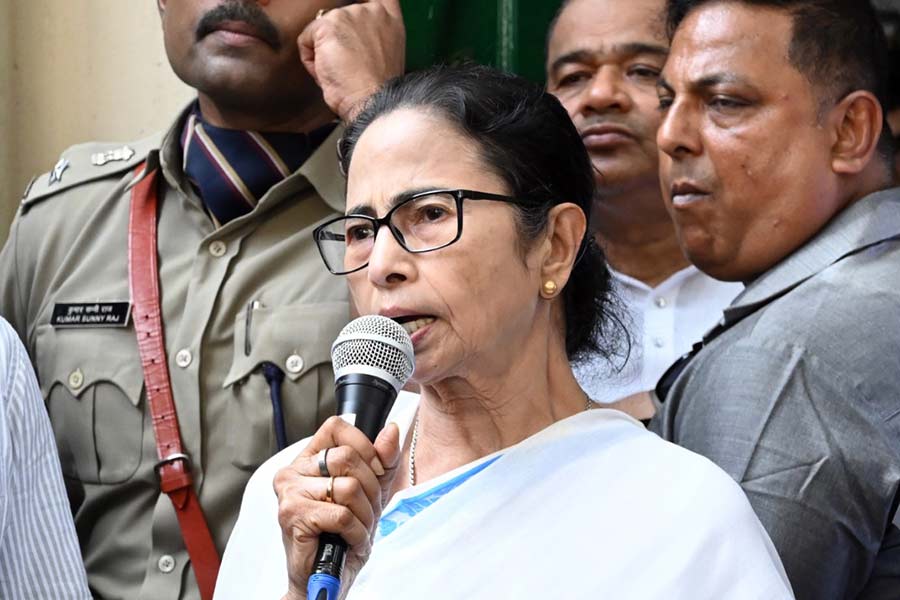 |
| Priorities set: Nitish Kumar |
Patna, April 19: Bihar chief minister Nitish Kumar set an example when he held one of the cabinet meetings in a village during NDA-I. Back to power with a resounding majority, the chief minister is ready to set another example.
This time, he is going to have a special cabinet, which would discuss topics related only to the agriculture sector. Eighteen departments, including water resources, minor irrigation, energy, rural works, sugarcane industry, animal husbandry and disaster management, which are related to the agriculture sector, would be a part of this cabinet.
“The first meeting of the agriculture cabinet would be held on April 26,” a minister in the Nitish Kumar government told The Telegraph.
Two meetings on April 21 and 24 would precede it. At the first meeting, the chief minister would discuss various issues related to the agriculture sector with ministers and senior officials of the departments concerned. In the April 24 meeting, ministers of the 18 departments would be present.
The minister said: “These two meetings are very important as the agenda for the April 26 meeting would be decided on the basis of the discussions at these meetings.”
Giving an insight into the reasons, which led Nitish to take such a decision, the minister said: “The chief minister stands for comprehensive development of the sector, as majority of the state’s population still depends on agriculture and its allied activities. He has also made his intention clear that he wants to have something from Bihar on the plate of every Indian. For this to happen, the agriculture sector would need special attention.”
The minister added that it would be possible only if efforts of all the departments concerned converged for the promotion of the sector. “The agriculture cabinet would give impetus to this effort,” he said.
Explaining in detail, a source in the agriculture department said: “Bihar needs to catch up with the national productivity level in the production of major crops. It also needs to have sufficient variety of crops if the chief minister’s dream to have something from the state on the plate of every Indian is to be realised. A focused approach on the agriculture sector with all the departments concerned knowing well about their goals to achieve the desired growth would certainly be of great benefit.”
Terming the state government’s move as praiseworthy, economist N.K. Choudhary said: “More than 85 per cent of the state’s population is still dependent on the agriculture sector. The state would benefit from equitable growth only when the agriculture sector would grow at a rapid pace.”
The state government had chalked out a roadmap for the agriculture sector in 2008 and since then many steps, including promotion of modern techniques of farming, organic farming, use of improved seeds among others, have been taken.
The state, however, still lags behind on the productivity front. Against the national productivity average of 2 tonnes of rice per hectare, the state rice productivity is about 1.5 tonnes per hectare. In case of wheat, the state productivity is 2.2 tonnes per hectare against the national average of 2.7 tonnes.











